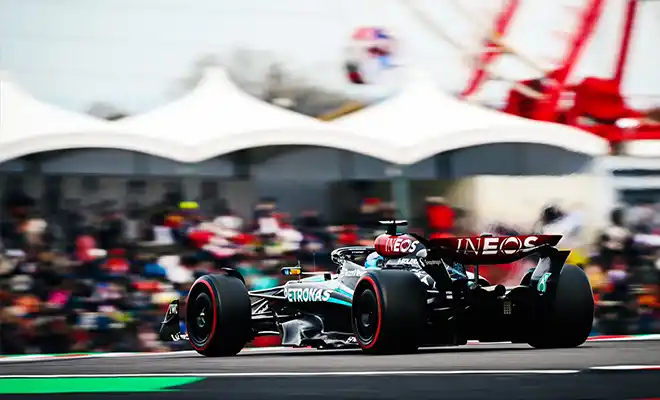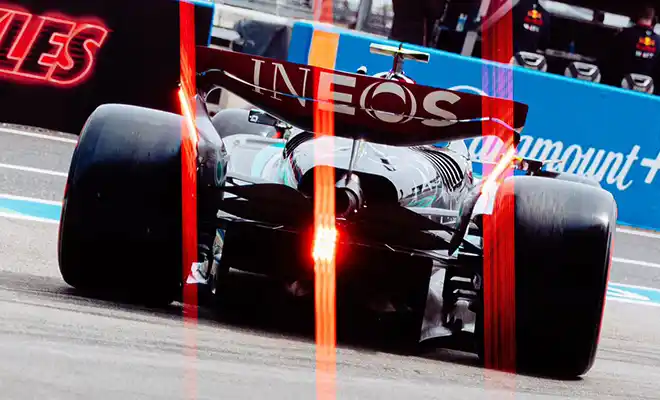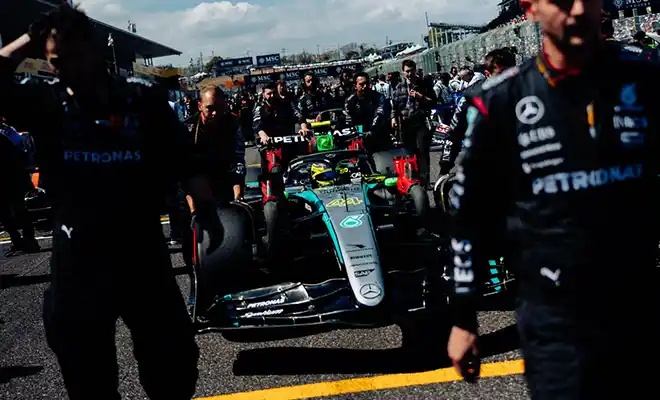After a challenging Japanese Grand Prix, Mercedes F1’s engineering insights promise a leap in W15’s performance optimization for upcoming races.
Mercedes F1 claims to have a better understanding of how to maximize the performance of its W15 following the Japanese Grand Prix.
Despite only achieving seventh and ninth places last weekend, the team’s trackside engineering director, Andrew Shovlin, stated they were able to optimize performance within a narrow operational window.
“Our main agenda was to try and make the car a bit more predictable throughout the weekend,” he explained in his debrief of the Japanese GP at Suzuka today.
“What we found is that we can get it into a good window, but if the wind changes or the track temperature shifts rapidly, it leads to poor performance in both the race and qualifying. The window is too narrow.”
“Now, there’s no doubt that we’re not where we need to be at the moment, we know that and we have work to do. But it’s clear that working with this car over the weekend has been easier; the balance of the car was more consistent.”

“There are issues we need to get to grips with and solve quickly. But we definitely seem to have a more stable platform, with behavior that’s more consistent throughout the weekend, but as I’ve said, we’re aware there’s work to be done and we’re already working on it for China.”
The team’s race strategy was altered by switching to hard tires before the restart, hoping to cover the distance with just one additional pit stop. However, this did not pay off as the team struggled to make the tires last long enough.
Shovlin suspects the overly sensitive W15 was impacted by track temperature changes during the race. He mentioned realizing their strategy was failing as their lap times began to drop with the hard tires, but found encouragement in their pace later in the race.
“We stayed out a bit longer during that second stint to try and make some ground. We might have benefited from a Safety Car, but there wasn’t one. But you don’t want to stay out so long that you can’t make up the time with new tires later on.”

“We’ve now analyzed the tire wear curves, and the hards and mediums don’t seem very different. It was certainly cooler at the end of the race, which may have helped. But the second and third stints went well.”
“So, we know we’re not fast enough, we know there’s a significant gap to Red Bull that we need to close, and there’s a smaller gap to Norris, with Ferrari that we need to work on. But definitely, the car’s performance was where we expected it to be during the second and third stints.”
While George Russell moved up from ninth to seventh, Lewis Hamilton did the opposite. Shovlin noted that damage to the endplate of Hamilton’s front wing exacerbated his lack of front downforce.
“It wasn’t just the absolute amount of downforce he lost; it just made the car a bit more understeery in a stint where we were probably already a bit too understeery. The track was hot when we were on the grid, so we took a bit of front wing out for that. But that additional loss then caused him problems, and he actually found himself quite limited in front grip throughout that first stint.”
“At the pit stop, we didn’t change the wing but were able to add a bit more angle. With a bit more load, this put his car into a much better balance, which again explains the better stints afterwards.”

Mercedes F1 Gains Insight on W15 at Japanese GP. Mercedes F1 Gains Insight on W15 at Japanese GP
- ReadMore>Vasseur Highlights ‘Major’ Ferrari Gains in Speed Corners
- Following us on Facebook and Twitter
